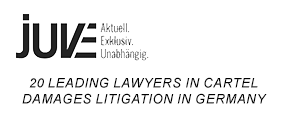Lieff Cabraser Heimann & Bernstein LLP, Cappello & Noël LLP, and Keller Rohrback LLP announce that Victoria Frost d/b/a Frost Fit and seven other plaintiffs have filed a class action lawsuit in Los Angeles Superior Court against Southern California Edison Company and Edison International for personal and business losses from the 2017-2018 Thomas Fire and Mudslides that occurred as a result of SCE’s alleged failure to properly and safely maintain its electrical infrastructure in Santa Barbara and Ventura Counties.
The Thomas Fire, Large-Scale Evacuations, and Lives Lost
Starting on or about December 4, 2017, a fire began raging in the mountains and steep slopes surrounding Lake Casitas and the City of Ojai in Santa Barbara and Ventura Counties. Driven by the Santa Ana winds, the fire consumed over 280,000 acres, including large portions of the Los Padres National Forest. Ash from the fire covered the land like a gray snow, and smoke filled the air and brought a dark pall over the sky. Over 100,000 residents were required to evacuate and two lives were lost.
The Thomas fire burned an area larger than New York City, Washington D.C., and San Francisco combined. At the height of its strength, the Thomas Fire qualified as a “firestorm,” meaning it was strong enough to create its own weather. At times, the fire advanced at a rate of an acre per second.
Fighting the Thomas Fire required the largest mobilization of firefighters for combating any wildfire in California history. More than 8,500 came from all over the United States and other parts of the world to combat the flames. The areas affected by the Thomas Fire were declared a national disaster by the President in January. The Thomas Fire burned more than 281,000 acres, destroyed 1,063 structures, including 775 homes, and damaged another 280 before it was finally contained on January 12, 2018. The California Department of Forestry and Fire Protection (“Cal Fire”) determined the Thomas Fire was both the largest fire in California’s modern history, as well as the seventh most destructive.
Massive Mudslides, at Least 21 Residents Killed
The Thomas Fire denuded the landscape of the dense thickets of chaparral, brush, and tall grass that normally cover the region. When rain arrived, the destruction from the Thomas Fire triggered mudslides by turning hundreds miles of the Santa Ynez Mountains into precarious, unstable ground capable of being swept away at any moment. Additionally, because the Fire burned so intensely, the soil was transformed into a dense, water-repellant surface. The U.S. Geological Survey warned of the high risk for disastrous landslides if heavy rain fell on mountainsides around Santa Barbara that had been scorched by the Thomas wildfire.
On January 9, 2018 massive flows of mud tumbled down mountain slopes laid bare by the massive fire. Car-sized boulders and trees rushed through the area on a devastating rampage. Massive flows of debris, comprised of mud as thick as concrete and moving at speeds of up to 20 miles per hour, slammed into the neighborhoods below. Some homes were ripped from their foundations while others were swallowed by waist-high mud and rubble. Over 20 million pounds of debris have been removed thus far, and trucks continue to haul thousands of pounds each day. At least twenty-one people, including children, were killed, and more than 400 homes were destroyed or damaged. Rescue crews continue to search for two missing people, a 2 year old and a 17 year old.
“It’s hard to describe the damage these fires and mudslides caused without sounding apocalyptic,” said Lieff Cabraser’s Robert Nelson, one of the attorneys who filed the complaint. “Walls of mud crashing through neighborhoods and homes at the speed of cars, fire devastation and deaths that never should have happened had Southern California Edison honored its duties to properly build, inspect, and maintain its power lines and electrical equipment.”
Santa Barbara, Montecito, Carpinteria Most Directly Affected
The area hardest hit by the mudslides was Montecito, a small community nestled between the Santa Ynez Mountains and the Pacific Ocean that was just below the Thomas Fire but had been spared by its flames. The small oceanside city of Carpinteria was also affected. U.S. Highway 101, the main artery from Santa Barbara to points east, was covered by the mudslides, and remained closed for over ten days, severely restricting access to and from the area and causing businesses to close or go without customers and employees.
The class action complaint alleges that the Thomas Fire and related mudslides disasters have a common underlying cause, that they were sparked by unsafe electrical infrastructure owned, operated, and improperly maintained by Southern California Edison Company and Edison International (hereinafter “SCE”). The complaint notes that SCE had a duty to maintain its electrical infrastructure properly and to ensure surrounding trees and vegetation were trimmed and kept at a safe distance, and that SCE violated that duty by knowingly operating aging, overloaded, and/or improperly maintained infrastructure.
In fact, SCE’s violations have caused fires before, and SCE has been sanctioned numerous times for such violations previous to the Thomas Fire. As the complaint further alleges, SCE has throughout the time before and leading up to the Thomas Fire knowingly and habitually underestimated the potential risk, including fire risk, that its systems posed. Had SCE acted responsibly, the devastating Thomas Fire and subsequent lethal and destructive mudslides could have been prevented.
“It is heartbreaking to consider that the losses and deaths suffered by the victims of the Thomas Fire and mudslides could have been prevented had SCE upheld its duties to its customers and adequately and safely maintained its electrical infrastructure as mandated by law,” notes Lexi Hazam, another Lieff Cabraser partner filing the case. “We hope our lawsuit will provide justice to those devastated by the fires and mudslides, and help raise awareness of the serious fire dangers and related other dangers still present in thousands of similar Southern California Edison works and systems throughout Southern California.”
The Complaint notes that plaintiffs have suffered property damage, economic losses, and disruption to their homes, businesses, lives, and livelihoods, and they seek fair compensation for themselves in this case. They also bring this case as a class action, because they believe all those who suffered such damages and losses should be fairly treated and included as beneficiaries of a comprehensive and consistent adjudication or resolution of liability and damages. Plaintiffs bring claims on behalf of themselves and all others similarly situated for damages for, inter alia, damage to and loss of use of real and personal property; loss of income; loss of business; consequential and incidental damages; emotional distress; and other harm caused by the defendants’ wrongful conduct.
The Plaintiffs and Their Losses
Robert Blanchard and Victoria Frost are husband and wife residents of Santa Barbara County. Ms. Frost d/b/a Frost Fit is an independent contractor who works as a nutritionist and fitness consultant primarily out of the Coral Casino Beach and Cabana Club (“Coral Casino”) in Montecito. Because of the Thomas Fire, the Coral Casino was evacuated and Ms. Frost was unable to work. Just as the orders had been lifted, the Coral Casino was affected by the Mudslides, and yet again, she was not able to work with her clients. The Coral Casino remains closed at the time of this filing and does not expect to reopen until April 1, 2018. Mr. Blanchard is a contractor who works for himself. The Thomas Fire burned down the project he was building.
Martha Smilgis is a resident of Santa Barbara County who owns a residence in Montecito that was damaged by the mudslides, including by mud breaking through a window and a tree crashing through her front door. The mudslides also filled the home with the contents of homes higher up the hill. It now contains the books, clothing, and pieces of plumbing of her neighbors.
Diane Meehan d/b/a Dadiana Inc. is a resident of Santa Barbara County and the sole proprietor of Diadana Inc., a salon in Montecito she has owned and worked in for the past 20 years. The Thomas Fire forced the closure of her business for two weeks, and just as she was to return to work the mudslides hit, forcing further closures. She has yet to be able to return to her salon and has been forced to rent space from another salon in order to do any work. Her home in Carpinteria has also been damaged by smoke and ash from the Thomas Fire.
Platinum Performance Fitness, Inc., d/b/a Platinum Fitness Summerland, is a California corporation. It operates a gym located in Summerland, Santa Barbara County, owned by Peter Park and Kelly Park, husband and wife and residents of Santa Barbara County. Peter Park is a nationally recognized personal trainer with clients in Santa Barbara and Los Angeles. When the Thomas Fire hit, Platinum Fitness Summerland was closed down under an evacuation order. Approximately 80% of the gym’s clients are from Montecito, which was hit hard by the fire and was also under mandatory evacuation orders. In addition, the air quality was so poor that no clients wanted to train. Following the fire, the gym was again placed under mandatory shut down after the flood, mudslides, and Highway 101 closure. In addition, the Parks were under a mandatory evacuation order from their Santa Barbara home during the Thomas Fire, and suffered damages in having to evacuate, and their home suffered ash and smoke damage.
Honhai, Inc., is a California corporation doing business as the China Pavilion at Chapala, a restaurant in Santa Barbara City. It is owned by Santa Barbara County residents and husband and wife, Lisa Lee and Peter Chen. The Thomas Fire hit as holiday parties and catered events were just starting, and caused the cancellation of many events as well as a severe drop in business due to the conditions surrounding the fire as well as recurrent power outages and subsequent evacuations and road closures due to the mudslides.
Thomas E. Carroll is a resident of Santa Barbara County, and the sole proprietor of his personal business driving residents of Montecito and Santa Barbara, frequently including trips throughout Southern California. When the Thomas Fire hit, most of his clients evacuated, and deteriorated visibility conditions led most others to avoid traveling, leading to a drastic drop in business. Since the mudslide-caused highway closures, Mr. Carroll’s business has been virtually nonexistent.
Christopher T. Burke is a personal trainer and a Santa Barbara County resident. Operating primarily out of Platinum Fitness Gym in Summerland, he also travels to corporations and client homes. The Thomas Fire reduced air quality so severely that no clients wanted to train, many leaving town entirely. Mr. Burke’s work was reduced drastically before Platinum Fitness was shut entirely under a mandatory evacuation order. When the air quality improved available work began to return, only to disappear when the mudslides hit Montecito and evacuation was reimposed, cutting Mr. Burke off from 70% of his income.
The Class Action Claims
The lawsuit is brought by the named plaintiffs alleging class claims on behalf of individuals and entities worked in, or owned or leased real or personal property within the California counties of Santa Barbara or Ventura (the “Fire and Mudslides Area”); California entities that owned, operated, or leased a physical facility in the Fire and Mudslides Area and sold products directly to consumers or end users or regularly purchased products from the Fire and Mudslides Area to produce goods for resale, or provided services while physically present in the Fire and Mudslides Area, or owned or leased real property in the Fires and Mudslides Area.
The lawsuit seeks compensation for plaintiffs’ real and personal property losses, loss of wages and earning capacity, business profits, displacement expenses, and punitive damages, among other claims. Read a copy of the Complaint.
Learn more about the 2017 Southern California Fires and lawsuits on behalf of Santa Barbara and Ventura County residents and business owners harmed by the fire and mudslides.
About Lieff Cabraser
Lieff Cabraser has a long history of successfully championing the rights of those injured or who have lost property and businesses as a result of fires and other environmental disasters. Over the last 45 years, we have assisted our clients in recovering over $118 billion in verdicts and settlements. Our firm helped lead litigation against BP over the 2010 Gulf of Mexico Deepwater Horizon oil rig explosion and oil spill, successfully representing property owners, business owners, wage earners, and other harmed parties. Lieff Cabraser was also appointed by the court to lead litigation on behalf of homeowners, businesses and employees who suffered economic injuries relating to 2015 Plains pipeline oil spill in Santa Barbara, and also helps lead two class action cases on behalf of homeowners and businesses who suffered losses from the 2015-2016 Porter Ranch gas leak in Southern California.
Source/Contact
Lexi Hazam
Lieff Cabraser Heimann & Bernstein
275 Battery Street, Suite 2900
San Francisco, CA 94111
415 956-1000
lhazam@lchb.com
Contact us
Use the form below to contact a lawyer at Lieff Cabraser.











